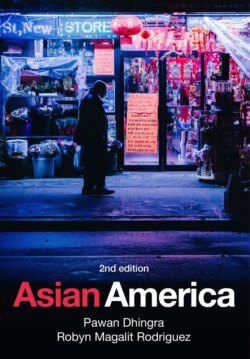Читать книгу Asian America - Pawan Dhingra - Страница 44
Privilege
ОглавлениеThe flipside of discrimination is privilege. Privilege refers to the benefits of being in the dominant group, namely white, male, heterosexual, and middle class and above. Numerous examples of privilege exist in daily life where the dominant race, gender, sexuality, or class considered “normal” is supported in the media, political discourse, and daily interactions. Rather than only focusing on the disadvantages facing subordinate groups, it is necessary to account for the benefits that the dominant group receives. Some are seemingly trivial, such as finding “flesh”-color Band-Aids in any convenience store that actually match one’s skin color (McIntosh 1989). Some are of deep consequence, such as being able to rent an apartment of one’s choice and price range while others are kept out due to their perceived race or sexual orientation (Lipsitz 1998).
This is not to suggest that white middle-class men do not face their own hard-ships. Wages have not risen at the same pace as expenses. Families are working harder in order to afford the same quality of life as the earlier generation. Cities and states have less money to invest in infrastructure, such as bridges and roads, which all people depend on. Yet these same problems impact women and people of color, often in more consequential ways.
These racial, gender, and sexual inequalities and supportive ideologies create challenges for minorities. Yet it is an open question as to how much active discrimination continues to occur. As noted, explicitly racist ideologies are no longer accepted publicly. Much discrimination stems from institutional practices rather than by intent. Minorities have attained impressive positions of authority. As explained in chapter 1, some theories of adaptation argue that minorities can overcome what little discrimination still exists.
